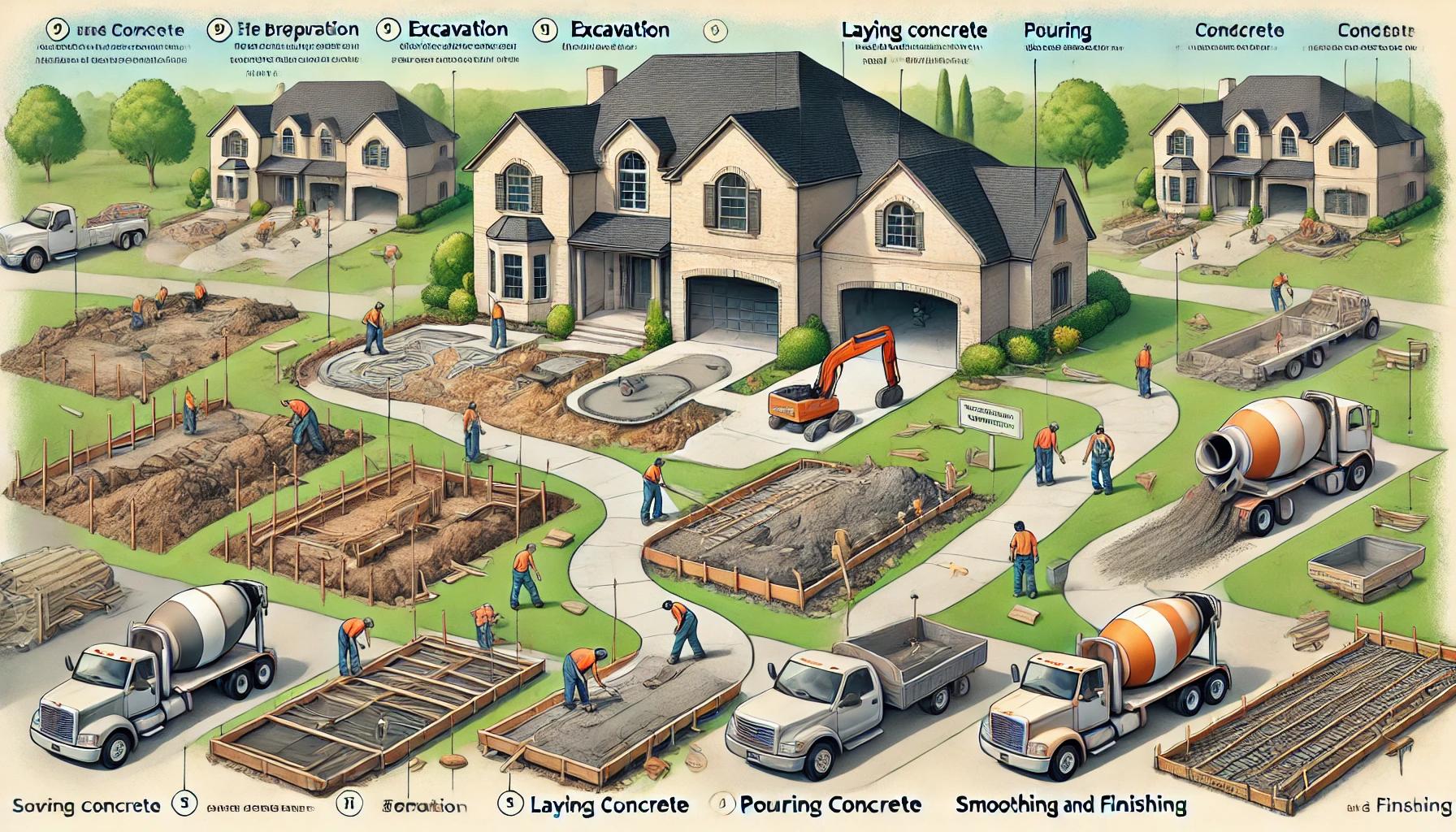Concrete Driveway Installation can significantly enhance the curb appeal and functionality of your property. Whether you’re a DIY enthusiast or planning to hire professionals, understanding the process is crucial. This comprehensive guide will walk you through each step of installing a concrete driveway in San Antonio, ensuring you achieve the best results possible.
Why Choose a Concrete Driveway?
Concrete driveways are popular for several reasons:
- Durability: Concrete is a highly durable material that can withstand heavy loads and harsh weather conditions.
- Low Maintenance: Unlike other materials, concrete requires minimal maintenance over its lifespan.
- Cost-Effective: While the initial cost may be higher, the long-term savings on repairs and maintenance make it a cost-effective option.
- Aesthetic Appeal: Concrete driveways can be customized with various finishes, colors, and patterns to match your home’s aesthetics.
Step-by-Step Guide to Concrete Driveway Installation
1. Planning and Permits
Before you start, it’s essential to plan the project and obtain necessary permits. In San Antonio, you may need to check with local authorities for specific regulations and permits required for driveway installation.
Consider the following:
- Driveway size and layout
- Drainage requirements
- Local building codes
- Utility lines and easements
2. Site Preparation
Proper site preparation is critical for a successful concrete driveway installation:
- Mark the Area: Use stakes and string to outline the driveway’s dimensions.
- Excavation: Excavate the area to a depth of 8-12 inches, ensuring a level base.
- Subgrade Preparation: Compact the soil and add a layer of gravel (4-6 inches thick) for drainage and stability.
3. Formwork Installation
Installing formwork is crucial for shaping and stabilizing the concrete:
- Build the Forms: Use wooden or metal forms to outline the driveway’s shape and keep the concrete in place.
- Secure the Forms: Ensure the forms are level and securely anchored to prevent movement during pouring.
4. Reinforcement
Reinforcing the concrete adds strength and durability:
- Install Rebar: Place rebar or wire mesh within the forms to reinforce the concrete.
- Space the Rebar: Ensure the rebar is evenly spaced and properly supported off the ground.
5. Mixing and Pouring Concrete
Mixing and pouring concrete requires careful attention to detail:
- Mix the Concrete: Use a concrete mixer to achieve a consistent mixture. Follow the manufacturer’s instructions for the correct water-to-cement ratio.
- Pour the Concrete: Begin pouring the concrete at one end of the driveway, using a shovel or rake to distribute it evenly.
- Level the Concrete: Use a screed board to level the concrete surface, ensuring a smooth finish.
6. Finishing
Finishing the concrete ensures a polished look and durability:
- Float the Surface: Use a bull float to smooth the surface and remove any imperfections.
- Edge the Concrete: Use an edger to create clean edges along the forms.
- Apply a Broom Finish: For added traction, use a broom to create a textured finish on the surface.
7. Curing
Curing is vital for the concrete’s strength and longevity:
- Cover the Concrete: Use plastic sheeting or curing compounds to keep the concrete moist.
- Maintain Moisture: Keep the concrete covered and moist for at least seven days to ensure proper curing.
Common Mistakes to Avoid Concrete Driveway Installation
Here are some common mistakes to avoid during concrete driveway installation:
- Improper Site Preparation: Failing to prepare the site adequately can lead to uneven surfaces and poor drainage.
- Incorrect Mix: Using the wrong water-to-cement ratio can weaken the concrete.
- Inadequate Reinforcement: Skipping reinforcement can result in cracks and reduced durability.
- Rushing the Curing Process: Not allowing the concrete to cure properly can compromise its strength.
Hiring Professionals vs. DIY
Deciding whether to hire professionals or tackle the project yourself depends on various factors:
- Experience: If you lack experience, hiring professionals ensures a high-quality result.
- Equipment: Professionals have access to specialized equipment that may be costly to rent or purchase.
- Time: DIY projects can be time-consuming, while professionals can complete the job more efficiently.
While DIY can save money, hiring professionals can provide peace of mind and a superior finish.
Conclusion
Installing a concrete driveway in San Antonio is a worthwhile investment that enhances your property’s value and functionality. Whether you choose to do it yourself or hire professionals, following this step-by-step guide ensures a successful installation. Proper planning, site preparation, and attention to detail are key to achieving a durable and visually appealing concrete driveway.
Remember, a well-installed concrete driveway not only improves your home’s curb appeal but also provides a long-lasting, low-maintenance solution for your parking needs.


